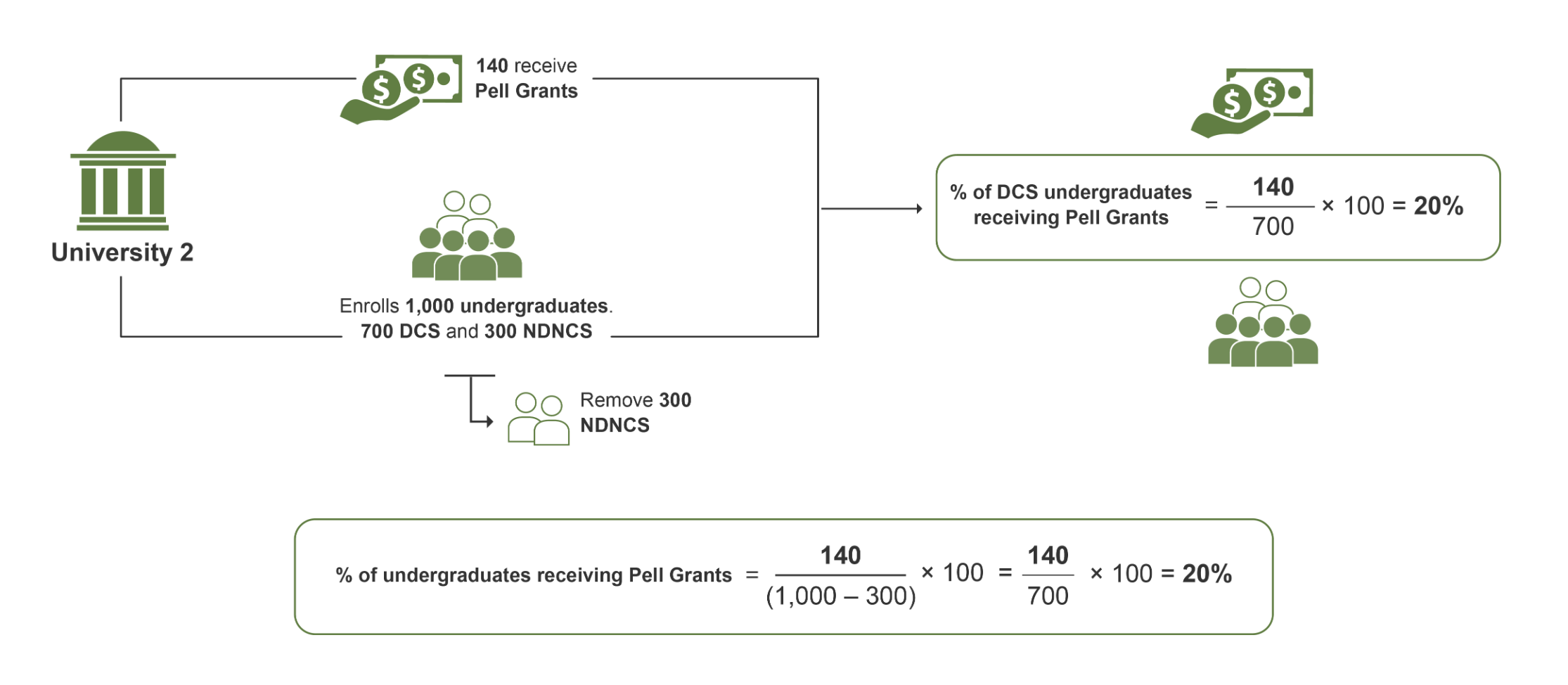Data use tip sheet: Using Student Financial Aid (SFA) and Fall (EF) or 12 Month (E12) Enrollment data to calculate how many undergraduates receive financial aid
On this page, you will find information about how to take non-degree/non-certificate-seeking (NDNCS) students into account when calculating how many undergraduates receive financial aid.
Which Undergraduates Receive Financial Aid?
The “all undergraduates” group in the SFA survey component (Group 1) includes all undergraduate students that are enrolled at an institution during a specified time period. This group is legislatively mandated for collection by the Higher Education Act of 1965 (HEA), as amended.
When this group was added to the SFA survey component, NCES also calculated multiple percentages using this number as a denominator. These percentages were shown to institutions in the collection and included in the IPEDS data tools and shown on College Navigator. These percentages are useful for understanding the percentage of all undergraduates that receive different types of Federal Student Aid at institutions.
While these percentages are often useful, it is important to note that the all undergraduates category includes non-degree/non-certificate-seeking (NDNCS) students; NDNCS students are not eligible for Title IV Federal Student Aid and therefore are not able to be included in the numerator.
For example, the percent of all undergraduates who receive Federal Pell Grants (shortened in graphics as Pell Grants) is currently calculated as:


At first glance, it appears that University 1 serves a larger percentage of Federal Pell Grant recipients than University 2 (20% vs. 14%, respectively). However, 300 of the 1,000 undergraduates at University 2 are NDNCS and are therefore not eligible to receive any Title IV Federal Student Aid. If these 300 students were removed from the denominator for University 2 , the percentage of Federal Pell Grant recipients would increase (i.e., smaller denominator and same numerator yields larger percentage):

How to account for NDNCS undergraduates in calculation of percentages of undergraduates receiving financial aid for institutions with none or a small percentage of NDNCS undergraduates using SFA and EF (for academic reporters) or E12 (for program reporters) data
For a majority of institutions, calculating the percentage for undergraduates is easy using data from the SFA survey component. This works for institutions with no NDNCS undergraduates or with only a small percentage of NDNCS undergraduates.
To calculate the undergraduate percentages for institutions with no or small populations of NDNCS undergraduates, use the formula below:

How to account for NDNCS undergraduates in calculation of percentages of undergraduates receiving financial aid for institutions with a large percentage of NDNCS undergraduates using SFA and EF (for academic reporters) or E12 (for program reporters) data
For academic reporters with large populations of NDNCS undergraduates, calculating percentages for DCS undergraduates is possible using data from the SFA and EF survey components.*
For program reporters with large populations of NDNCS undergraduates, calculating percentages for DCS undergraduates is possible using data from the SFA and E12 survey components, starting with students enrolled between July 1, 2019 and June 30, 2020. Prior to that student cohort, E12 data did not include a separate count of NDNCS undergraduates.*
To calculate the undergraduate percentages for institutions with large populations of NDNCS undergraduates, use the formula below:

* Some institutions may have incorrectly removed NDNCS undergraduates from the data they submitted for the SFA survey; therefore, make sure to review your calculations and make sure that they make sense for all of the institutions in your file.